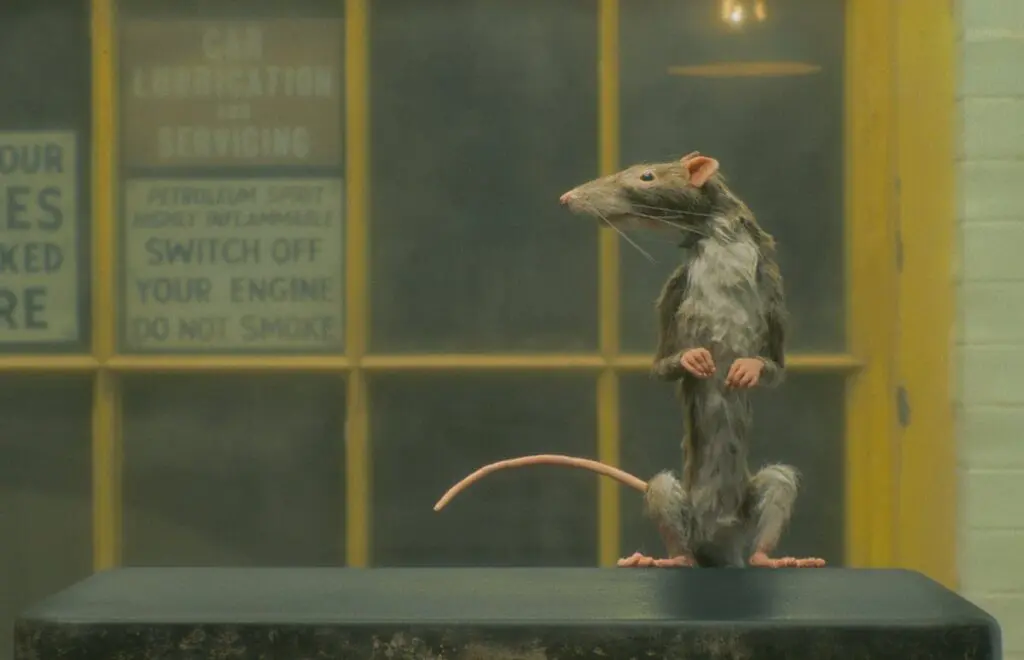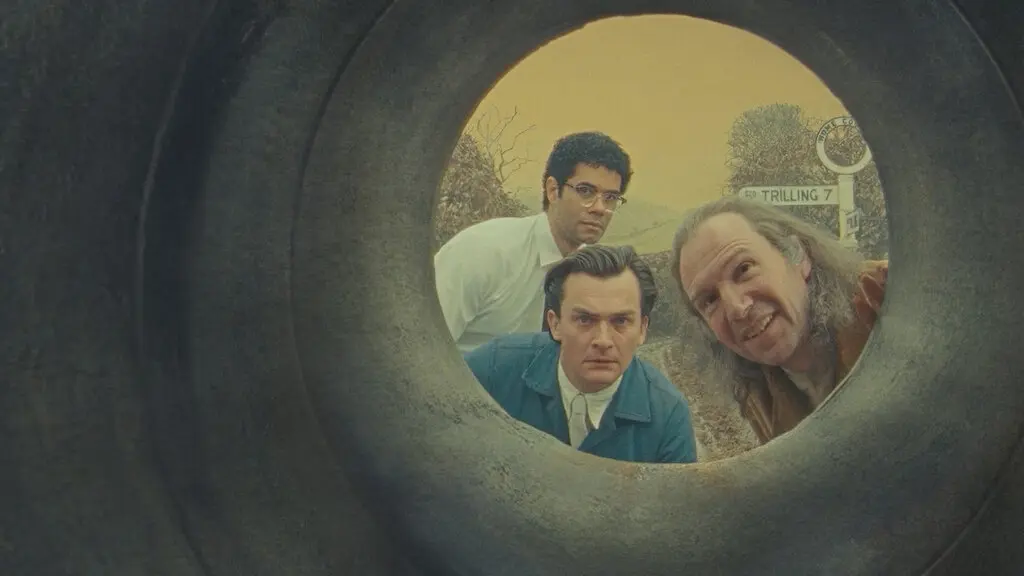The Rat Catcher is weird even by the standards of both Wes Anderson and Roald Dahl, and even within the context of the collection of short films directed by the former from the writings of the latter that are now streaming on Netflix. After The Wonderful Story of Henry Sugar and The Swan, this is the third short in the collection, and in some ways the most formally daring and ambiguous. The ending of The Rat Catcher raises more questions than it answers, but we’re here to help.
This story, in its broad strokes, revolves around two working-class Englishmen played by Richard Ayoade and Rupert Friend who employ the services of a rat catcher sent from the Health Office to exterminate the rodents menacing a local hayrick.
The titular rat catcher is played by Ralph Fiennes, who has played Dahl himself in previous shorts and does so briefly here too. He cuts a bizarre figure, resembling a rat himself, since he believes it is necessary to become the creatures to best hunt and kill them.
How does the Rat Catcher kill the rat?
The Rat Catcher has various tried-and-true means of dealing with rats, but none of them seem to work in the film. In desperation, he tries to prove himself by making a bet with Claud that he can kill a rat without using his hands or feet. With his pointy, rat-like incisors, he bites the rat and presumably eats it, since it isn’t there when he’s finished, and his mouth is full of blood.
To be fair, I’m not sure the Rat Catcher actually eats the rat. Throughout the short, Anderson deliberately plays with the idea of certain props being invisible, such as a tin of poison, a live rat, and a ferret, all of which the Rat Catcher pulls out of his cavernous pockets. If the rat just disappeared so we didn’t have to see it dead, that would make as much sense as anything else.
The rat that the Rat Catcher eventually kills is rendered in cutesy stop-motion animation that recalls The Fantastic Mr. Fox, coincidentally the last time Anderson adapted Dahl’s writing.

Image from The Rat Catcher (Credit – Netflix)
After failing to kill the rats and failing to impress the men he’s working for, the Rat Catcher literally scurries away in a manner deliberately designed to evoke a rat.
Fiennes is made to physically resemble a rat more and more throughout the short, and Dahl’s description of him creates the same impression. The Rat Catcher believes that the closer he can come to being a rat, the better he will be at catching them.
The funny irony of his departure is that he fled from people who he had inadvertently made fearful of him – and there’s no more rat-like behavior than that.
Through the Rat Catcher, Dahl echoes humanity’s sentiments towards rodents in general; our eagerness to despatch with perceived “pests” and to ostracise those who are different.
What’s in the hayrick?
The best twist in the short comes at the very end when it’s strongly suggested that the rats have been feasting on a corpse that has fallen into the hayrick.
One of the Rat Catcher’s methods is to win the rats over by leaving piles of oats for them to eat. After they’re used to the snack, he poisons the oats, so that the rats unknowingly kill themselves. However, the rats don’t eat the oats.
The Rat Catcher explains that the only reason rats wouldn’t eat oats is if they were full from eating something else. After the Rat Catcher has departed, the characters wonder aloud if the rats might have found something “nutritious” to eat, and a missing person poster is clearly visible in the window in the background.
Fun fact: The Roald Dahl short story Rummins confirms that there is indeed a corpse inside the hayrick.
Read More: Poison Review




